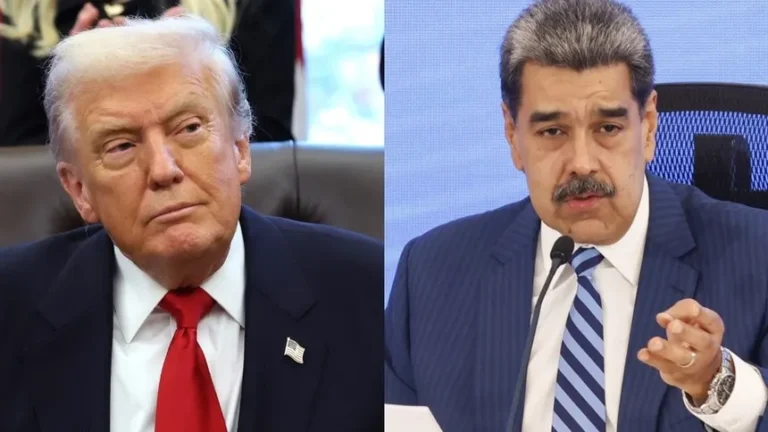
WASHINGTON, D.C. — A federal appeals court has temporarily reinstated the majority of President Donald Trump’s recently imposed tariffs, just one day after the U.S. Court of International Trade ruled that he had exceeded his legal authority.
The order, issued by the U.S. Court of Appeals for the Federal Circuit, did not include a written explanation but instructed plaintiffs to respond by June 5 and the administration by June 9. The reinstated tariffs, dubbed “Liberation Day” duties, target a wide range of imports, including those from Canada, Mexico, and China, which the administration linked to the flow of illicit fentanyl into the U.S.
The original ruling from the trade court had placed an immediate halt on these broad duties, introducing uncertainty over the administration’s trade strategy. Despite the setback, administration officials expressed confidence in their legal position and hinted at the possibility of using alternative executive powers to implement the tariffs if necessary.
Legal Challenges Continue in Separate Court
In a separate case, U.S. District Judge Rudy Contreras issued a narrower ruling that temporarily blocks the tariffs from being applied to the educational toy company Learning Resources. The court allowed the company’s legal challenge to proceed, marking another front in the expanding legal battle.
Although Contreras’ decision affects only one company, it adds to the growing uncertainty around the future of the tariff program.
Tariffs Central to Administration’s Trade Strategy
The Trump administration has made tariffs a key component of its broader trade and economic policy, using them to pressure foreign governments into renegotiating trade terms with the U.S. Officials maintain that the duties are a necessary response to foreign actions harming U.S. economic interests.
White House economic adviser Kevin Hassett told Fox Business Network that the administration expects the appeals court to rule in its favor and dismissed the initial ruling as a temporary hurdle that should not interfere with ongoing negotiations. Trade talks with Japan and India remain on schedule, according to officials from both countries.
White House trade adviser Peter Navarro noted in an interview with Bloomberg TV that the administration could invoke other statutory authorities to continue implementing tariffs if the current legal route proves unviable.
Basis for Tariffs Under Review
The administration had used the International Emergency Economic Powers Act (IEEPA) to justify the wide-reaching duties, citing national emergency concerns. However, the trade court concluded that IEEPA does not grant the president unilateral authority to impose such sweeping tariffs.
Other tariffs, such as those on steel, aluminum, and automobiles, which were imposed under separate national security-related statutes, remain unaffected by the legal challenge.
Global Reactions and Market Response
Canadian Prime Minister Mark Carney welcomed the trade court’s initial ruling, aligning with Canada’s longstanding stance that the tariffs lacked legal justification. The British government called it a domestic issue for the United States and emphasized the early stage of the legal process.
Germany and the European Commission declined to comment on the matter.
Meanwhile, economic analysts say the case is far from settled. Bernard Yaros of Oxford Economics stated that the administration may rely on alternative laws to maintain existing tariff levels. Businesses and industry groups have voiced concerns over the ongoing unpredictability.
Jonathan Gold, vice president of supply chain at the National Retail Federation, described the development as “another chapter” in a prolonged and uncertain effort to establish a stable trade policy framework.
Economic Impact and Industry Disruption
Initial market reactions were mixed. While stocks in Asia saw early gains, European indexes remained mostly flat. In the U.S., the S&P 500 rose modestly by 0.4% before retreating from earlier highs. The dollar also lost early momentum, closing lower against major currencies.
After unveiling the tariffs on April 2, President Trump briefly suspended most of them following a negative reaction from financial markets. The administration planned to use the 90-day pause to negotiate new bilateral trade agreements. So far, only a deal with the United Kingdom has been announced.
Economists warn that the uncertainty could delay negotiations with other partners like Japan, which may prefer to wait for legal clarity.
Business Adjustments and Corporate Responses
The tariffs have had a ripple effect across industries, affecting manufacturers of goods ranging from luxury fashion to household appliances and automobiles. Higher raw material costs and disrupted supply chains have forced many companies to revise their business strategies.
Major firms such as General Motors, Ford, and Diageo have withdrawn their earnings forecasts due to the volatility. Some international companies, including Honda, Campari, Roche, and Novartis, are considering relocating or expanding their U.S. operations to avoid the effects of the tariffs.
What’s Next?
The legal status of the tariffs remains unresolved. The appeals court’s temporary reinstatement gives the administration time to defend its policy, but further rulings could shift the outcome.
With critical deadlines set for early June, the coming weeks will likely determine whether the administration’s tariff plan can move forward—or whether alternative legal mechanisms will be required to sustain it.





